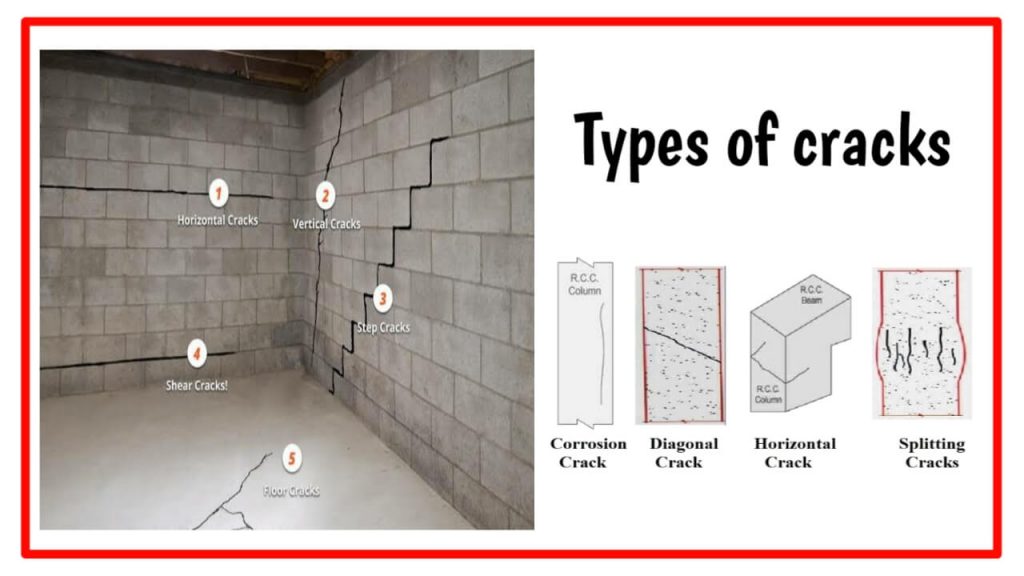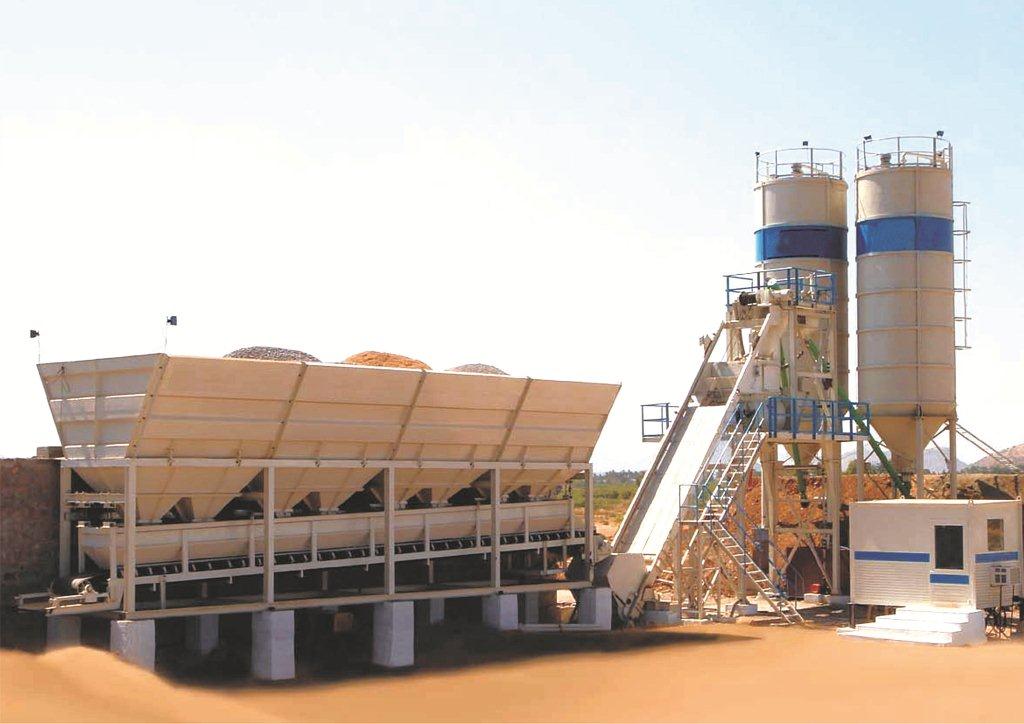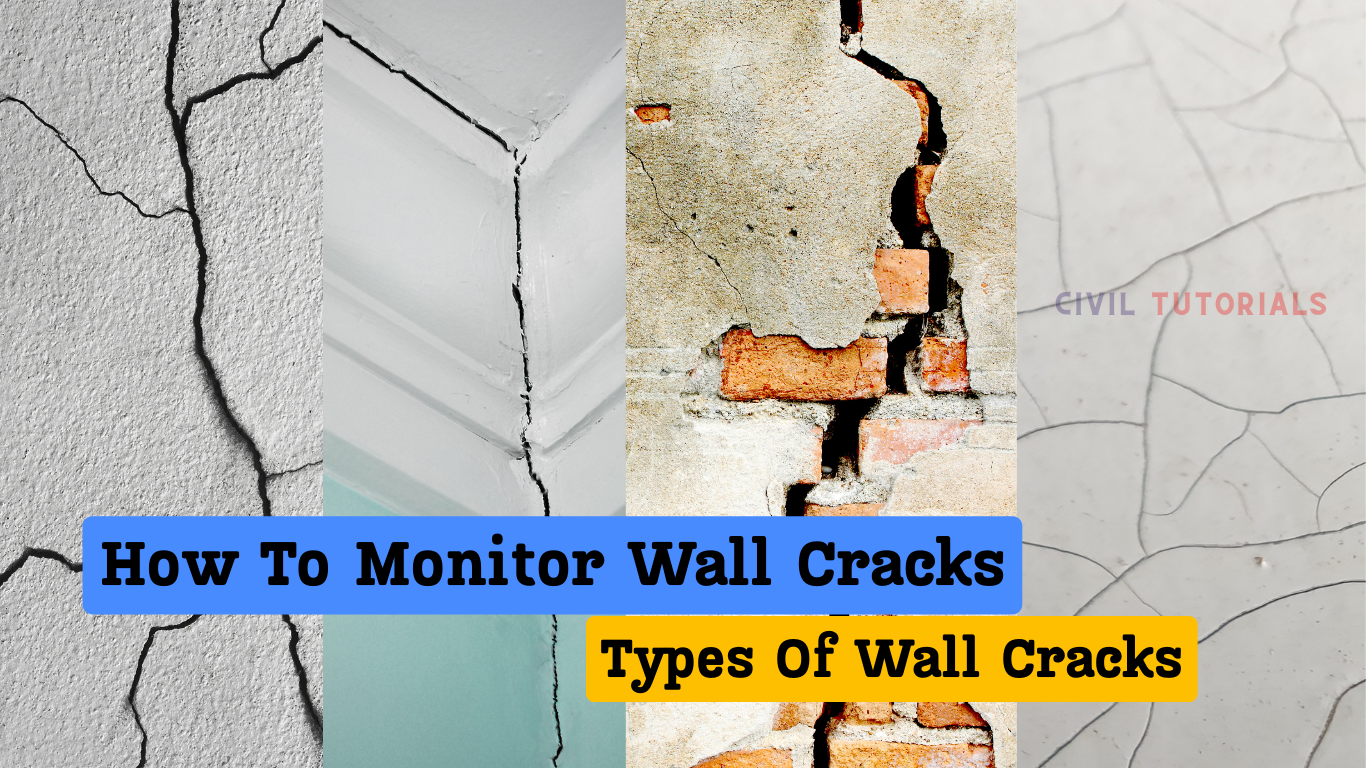Cement, a fundamental building material, plays a pivotal role in the construction industry, forming the backbone of structures that shape our urban landscape. Its versatility extends beyond its common association with concrete, as various types of cement cater to diverse construction needs.
In this exploration, we delve into the world of cement, unraveling the many types that exist and their unique properties. From the ubiquitous ordinary Portland cement to specialized formulations like rapid-hardening cement and sulfate-resistant cement, each type serves a distinct purpose in construction.
Ordinary Portland Cement (types of cement):
Ordinary Portland cement (OPC) is the most widely used type of cement in the construction industry. It is the basic form of cement that is commonly used for general construction purposes, including residential, commercial, and industrial projects. Here are some key features and properties of ordinary Portland cement:
- Composition: OPC is primarily composed of clinker, which is a nodular material produced during the cement manufacturing process by heating raw materials, including limestone, clay, and other corrective materials, to a high temperature and then grinding the resulting clinker.
- Grades: OPC is available in three grades, namely OPC 33, OPC 43, and OPC 53. These numbers represent the compressive strength of the cement in megapascals (MPa) at 28 days. OPC 53 has the highest compressive strength among the three grades.
- Setting Time: OPC has a moderate setting time, allowing enough time for mixing, transporting, and placing the concrete. However, it is important to follow the recommended guidelines for curing to ensure proper strength development.
- Color: The color of OPC is typically gray, but it can vary slightly depending on the raw materials and manufacturing process. White cement is also available, which is a variant of OPC with a low content of iron, manganese, and other colorants.
- Applications: Ordinary Portland cement is suitable for a wide range of applications, including the construction of buildings, bridges, pavements, and other general concrete structures. It is versatile and can be used in various concrete mix designs.
- Strength Development: OPC exhibits good strength development over time, making it suitable for both short-term and long-term construction projects. The three grades offer flexibility to choose a specific strength level based on project requirements.
- Durability: The durability of OPC is influenced by factors such as the quality of raw materials, curing practices, and environmental conditions. Adequate curing is essential to ensure the development of proper strength and durability.
- Cost-Effectiveness: OPC is generally cost-effective compared to some specialized types of cement. Its availability and widespread use contribute to its affordability for various construction projects.
Portland Pozzolana Cement (types of cement):
Portland Pozzolana Cement (PPC) is a type of cement that incorporates pozzolanic materials as one of its main constituents. Pozzolanic materials are finely divided siliceous or aluminous substances that, when combined with lime (calcium hydroxide) in the presence of water, react chemically to form compounds possessing cementitious properties. Here are the key features and properties of Portland Pozzolana Cement:
- Composition: The primary components of PPC include Portland clinker, pozzolanic material (usually fly ash, calcined clay, or volcanic ash), and gypsum. The proportion of pozzolanic material typically ranges from 15% to 35%.
- Pozzolanic Materials:
- Fly Ash: A byproduct of coal combustion in thermal power plants. It enhances the workability of concrete, reduces heat evolution during hydration, and contributes to long-term strength development.
- Calcined Clay: Clay that has been heated to high temperatures to create reactive compounds. It provides improved durability and reduces the carbon footprint of cement production.
- Volcanic Ash: Natural pozzolanic material with reactive properties. It is less commonly used than fly ash or calcined clay.
- Advantages:
- Improved Workability: PPC often exhibits better workability compared to ordinary Portland cement (OPC), making it easier to place and finish.
- Reduced Heat of Hydration: The presence of pozzolanic materials reduces the heat generated during the cement hydration process, which is beneficial in large concrete structures.
- Enhanced Durability: The pozzolanic reaction contributes to the formation of additional cementitious compounds, leading to increased durability and resistance to chemical attacks.
- Applications: Portland Pozzolana Cement is suitable for a wide range of applications, including residential and commercial construction, hydraulic structures, mass concreting, and projects where enhanced durability is required.
- Strength Development: PPC exhibits good long-term strength development. While it may have slightly lower early strength compared to OPC, it often surpasses OPC in terms of ultimate strength over time.
- Setting Time: The setting time of PPC is comparable to that of OPC, and it can be adjusted by controlling the fineness of the cement.
- Environmental Impact: The use of pozzolanic materials in PPC contributes to the reduction of greenhouse gas emissions associated with cement production. The incorporation of fly ash or calcined clay reduces the reliance on clinker, which is a major source of carbon dioxide emissions.
Rapid Hardening Cement: (types of cement)
Rapid Hardening Cement (RHC), also known as High Early Strength Cement, is a type of cement that develops higher strength at an early age compared to Ordinary Portland Cement (OPC). The rapid setting and hardening properties of this cement make it suitable for various construction applications where early strength gain is crucial. Here are the key features and properties of rapid-hardening cement:
- Composition: Rapid-hardening cement is typically produced by finely grinding Portland clinker with a higher percentage of C3S (tricalcium silicate) than regular OPC. The increased C3S content contributes to the accelerated strength development.
- Setting Time: RHC has a shorter setting time compared to OPC. It gains strength quickly after mixing with water, allowing for faster formwork removal and early utilization of structures.
- Early Strength: The most significant characteristic of RHC is its ability to achieve higher compressive strength at an early age, typically within a few days. This property is beneficial for projects that require quick turnaround times, such as repair works, precast concrete elements, and certain construction activities.
- Applications:
- Repair and Maintenance: Rapid-hardening cement is often used for repair and maintenance work where fast-setting and early strength are essential.
- Precast Concrete: RHC is suitable for the production of precast concrete elements where quick demolding and handling of the finished product are necessary.
- Cold Weather Concreting: It is advantageous in cold weather conditions where the setting of regular cement may be delayed.
- Heat of Hydration: RHC tends to generate more heat during the hydration process than OPC. This increased heat production can be a consideration in massive concrete structures, and precautions may be needed to manage temperature rise.
- Durability: While RHC achieves high early strength, its long-term durability is comparable to that of OPC. It is essential to consider the specific requirements of the project and whether rapid hardening or sustained long-term strength is more critical.
- Standardization: Rapid hardening cement is governed by specific standards and specifications. It is important to adhere to these standards to ensure the desired performance characteristics.
Low-Heat Cement (types of cement):
Low Heat Cement (LHC), also known as Low Heat Portland Cement, is a type of cement designed to generate less heat during the hydration process compared to Ordinary Portland Cement (OPC). The reduced heat of hydration is particularly beneficial in large concrete structures, where excessive heat can lead to cracking. Here are the key features and properties of low-heat cement:
- Composition: The composition of low-heat cement is similar to that of ordinary Portland cement, with the primary difference lying in the selection of raw materials and the manufacturing process. LHC typically has a lower percentage of C3S (tricalcium silicate) and a higher percentage of C2S (dicalcium silicate) compared to OPC.
- Heat of Hydration: The primary advantage of low-heat cement is its ability to produce less heat during the early stages of hydration. This is achieved by minimizing the formation of the high-heat-generating phase, C3S. The reduced heat is crucial in preventing thermal cracking, especially in massive concrete structures.
- Applications:
- Massive Concrete Structures: Heat Cement is particularly suitable for projects involving massive concrete elements, such as dams, foundations, and thick structural members, where temperature differentials and the potential for thermal cracking are concerns.
- Large Pours: It is beneficial in situations where large volumes of concrete need to be placed in a single pour, reducing the risk of thermal stress.
- Setting Time: Low-heat cement generally has a longer setting time compared to OPC. This extended setting time allows for more manageable placement and finishing of the concrete.
- Strength Development: While low-heat cement may exhibit slightly lower early strength compared to OPC, it typically catches up and achieves comparable or higher ultimate strength over time.
- Durability: The long-term durability of concrete produced with low-heat cement is similar to that of OPC. Proper curing practices and adherence to construction standards are crucial for ensuring the durability of the concrete.
- Standardization: Low-heat cement is subject to specific standards and specifications to ensure its performance and quality. It is important to follow these standards when using this type of cement in construction projects.
High-Alumina Cement (types of cement):
High-alumina cement (HAC), also known as calcium aluminate cement, is a type of hydraulic cement that is characterized by a high percentage of alumina (Al₂O₃) content. This cement is produced by fusing or sintering a mixture of limestone and bauxite (an aluminum ore) at a high temperature. Here are the key features and properties of high-alumina cement:
- Composition: High Alumina Cement primarily consists of monocalcium aluminate (CaAl₂O₄) as the main clinker phase, along with dicalcium aluminate (Ca₂Al₂O₅) and other phases. The high alumina content distinguishes it from ordinary Portland cement (OPC).
- Rapid Setting: High-alumina cement has a rapid setting and hardening time, achieving high strength in a short period. This property makes it suitable for applications where quick turnaround times are essential.
- High Temperature Resistance: HAC exhibits excellent resistance to high temperatures, making it suitable for applications in refractory linings, foundry operations, and other high-temperature environments.
- Strength Development: High-alumina cement can attain high compressive strength early in the curing process. However, it is important to note that its strength and development over time may be less than that of OPC.
- Low Carbonation: HAC is less prone to carbonation compared to OPC. Carbonation is a process in which carbon dioxide reacts with calcium compounds in cement, potentially leading to a reduction in the alkalinity of the concrete.
- Applications:
- Refractory Castables: High Alumina Cement is commonly used in the formulation of refractory castables for lining furnaces, kilns, and other high-temperature equipment.
- Rapid Repairs: Its rapid setting and hardening characteristics make HAC suitable for applications where quick repairs are required.
- Chemical Resistant Structures: High Alumina Cement is resistant to certain chemicals, making it suitable for structures exposed to aggressive chemical environments.
- Expansion Characteristics: One challenge associated with High Alumina Cement is its potential for significant volume expansion during setting and hardening. This expansion can lead to cracking, and careful consideration is required in the design and application to minimize such effects.
- Special Considerations: Due to its specific properties and potential for expansion, High Alumina Cement requires careful handling and application. Proper curing practices are essential to mitigate the risk of cracking.
Blast Furnace Slag Cement (types of cement):
Blast Furnace Slag Cement (BFSC), also known as Slag Cement, is a type of hydraulic cement made by grinding together Portland cement clinker and granulated blast furnace slag. The slag, a byproduct of the iron-making process in blast furnaces, is rapidly quenched with water and ground into a fine powder. Here are the key features and properties of blast furnace Slag cement:
- Composition: Blast Furnace Slag Cement is typically composed of around 30% to 70% granulated blast furnace slag, and the remaining portion is Ordinary Portland Cement (OPC) clinker. The exact composition may vary based on the specific requirements and standards.
- Granulated Blast Furnace Slag (GBFS): GBFS is a byproduct of the iron-making process in blast furnaces. It is a glassy, granular material that, when ground finely, possesses cementitious properties. The use of GBFS in cement production contributes to sustainability by utilizing an industrial waste product.
- Hydration: The addition of granulated blast furnace slag in cement leads to a slower hydration process compared to OPC. This gradual hydration contributes to the long-term strength development and durability of the concrete.
- Setting Time: Blast Furnace Slag Cement generally has a longer setting time compared to OPC. This property can be advantageous in projects where extended working time is required.
- Low Heat of Hydration: BFSC tends to generate less heat during the hydration process compared to OPC. This characteristic is beneficial in large concrete structures where heat-related issues, such as thermal cracking, need to be minimized.
- Improved Workability: The use of Blast Furnace Slag Cement often results in improved workability of concrete. The finer particles of GBFS contribute to a smoother and more cohesive mix.
- Durability: Concrete made with Blast Furnace Slag Cement tends to exhibit enhanced durability due to the pozzolanic reactions between the slag and calcium hydroxide, resulting in additional cementitious compounds. This can improve resistance to sulfate attacks and alkali-aggregate reactions.
- Reduced Environmental Impact: The use of Blast Furnace Slag Cement is considered environmentally friendly as it utilizes an industrial byproduct and reduces the demand for traditional raw materials, contributing to sustainability in the construction industry.
- Applications:
- Mass Concrete Construction: The low heat of hydration and gradual strength development make BFSC suitable for mass concrete structures where thermal considerations are important.
- Marine Structures: The durability of concrete made with BFSC makes it suitable for marine environments where resistance to sulfate attacks is crucial.
- Sustainable Construction: BFSC aligns with sustainable construction practices by utilizing a byproduct and reducing the carbon footprint associated with cement production.
White Cement:(types of cement)
White cement is a specialized type of cement that differs from Ordinary Portland Cement (OPC) in its color and certain properties. Here are the key features and properties of white cement:
- Composition: White cement is typically produced from raw materials with low iron content, such as China clay (kaolin) and chalk. It contains a low percentage of iron oxide and manganese, which are responsible for the gray color of ordinary cement.
- Color: The distinctive feature of white cement is its white or light gray color. This makes it suitable for applications where a bright and clean appearance is desired, such as architectural projects, decorative concrete, and the production of white or colored concrete products.
- Fineness: White cement is ground to a finer particle size compared to gray cement. The finer particles contribute to the smooth and creamy appearance of the finished concrete.
- Applications:
- Architectural Concrete: White cement is commonly used in architectural concrete applications where aesthetics are important. It is often chosen for building facades, monuments, and structures where a white or light-colored finish is desired.
- Terrazzo: White cement is a key component in the production of terrazzo, a decorative flooring material that consists of chips of marble, granite, or other aggregates embedded in a white cement matrix.
- Tiles and Pavers: White cement is used in the manufacturing of white or light-colored tiles, pavers, and other precast concrete products.
- Compatibility with Pigments: White cement is highly compatible with pigments, allowing for the creation of a wide range of colored concrete. This is particularly useful in decorative applications where various shades and hues are desired.
- Setting Time: The setting time of white cement is similar to that of ordinary cement. However, it is important to follow proper curing practices to achieve the desired strength and durability.
- Cost: White cement is generally more expensive than gray cement due to the specialized raw materials and production processes involved. The cost can be a consideration when choosing the appropriate cement for a project.
- Standards: White cement is subject to specific standards to ensure its quality and performance. These standards may vary by region, and it is important to adhere to the applicable standards when using white cement in construction.
Sulfate-Resistant Cement:(types of cement)
Sulfate-Resistant Cement (SRC), also known as Type V cement, is a type of hydraulic cement that is designed to resist the detrimental effects of sulfate attack. A sulfate attack occurs when sulfates present in soil or water react with the components of concrete, leading to the formation of expansive and disruptive compounds. SRC is formulated to provide enhanced resistance to this type of chemical deterioration. Here are the key features and properties of sulfate-resistant cement:
- Composition: The composition of sulfate-resistant cement is similar to Ordinary Portland Cement (OPC), but it may contain a higher percentage of tricalcium aluminate (C3A) and lower percentages of dicalcium silicate (C2S). The lower C3A content is particularly important, as C3A is susceptible to sulfate attack.
- Sulfate Resistance: SRC is specifically designed to resist the damaging effects of sulfate ions present in soils and water. A sulfate attack can lead to the formation of expansive ettringite crystals, causing cracking and deterioration of concrete.
- Applications:
- Marine Structures: SRC is commonly used in the construction of marine structures, such as piers, seawalls, and offshore platforms, where exposure to sulfate-rich seawater is a concern.
- Sewage Treatment Plants: Concrete used in sewage treatment plants is exposed to sulfate-containing wastewater, making SRC a suitable choice to resist sulfate attack in such environments.
- Foundations in Sulfate-Rich Soils: In areas where the soil contains high levels of sulfates, such as expansive clay soils, SRC may be recommended for foundations to prevent sulfate-induced damage.
- Durability: The use of sulfate-resistant cement enhances the durability of concrete in environments prone to sulfate attack, reducing the risk of deterioration and extending the service life of structures.
- Curing Practices: Proper curing practices are essential when working with sulfate-resistant cement to ensure optimal performance. Adequate curing helps achieve the desired strength and resistance properties.
- Cost: SRC is typically more expensive than Ordinary Portland Cement due to its specialized formulation and resistance properties. The cost considerations need to be weighed against the benefits of enhanced sulfate resistance.
- Standards: Sulfate-resistant cement is subject to specific standards and specifications to ensure its performance. Adherence to these standards is crucial for achieving the desired sulfate resistance in concrete.
Oil Well Cement:(types of cement)
Oil Well Cement (OWC) is a specialized type of hydraulic cement designed for use in oil and gas well drilling operations. It has properties that make it suitable for the unique and challenging conditions encountered in oil and gas wells. Here are the key features and properties of oil well cement:
- Composition: The composition of oil well cement is similar to Ordinary Portland Cement (OPC), but it is typically formulated with specific additives to meet the requirements of downhole environments. The additives may include accelerators, retarders, extenders, and dispersants.
- Setting Time: Oil well cement is designed to have controlled setting times to accommodate the various phases of well construction. It can be formulated to provide both rapid setting for initial wellbore integrity and later strength development for long-term durability.
- High Compressive Strength: Oil well cement must develop high compressive strength to ensure the integrity of the cement sheath that lines the wellbore. The cement sheath provides zonal isolation, preventing the migration of fluids between different geological formations.
- Sulfate Resistance: Oil well cement often contains sulfate-resistant additives to protect against sulfate attack, as wells may encounter sulfate-rich formations.
- High Temperature Resistance: Oil and gas wells can reach high temperatures at depth. Oil well cement is formulated to withstand elevated temperatures without compromising its integrity.
- Low Permeability: The cement sheath in oil and gas wells must have low permeability to prevent the migration of fluids between geological formations and to provide effective zonal isolation.
- Rheological Properties: Oil well cement must have specific rheological properties to ensure proper placement in the wellbore. These properties affect the fluidity, viscosity, and permeability of the cement slurry during placement.
- Compatibility with Well Fluids: Oil well cement should be compatible with the fluids encountered in the well, including drilling fluids and completion fluids.
- Adherence to Industry Standards: The production and use of oil well cement are subject to industry standards and specifications, such as those set by the American Petroleum Institute (API) and other relevant organizations.
- Classifications: Oil well cement is classified into different classes, such as Classes A, B, C, G, and H, each with specific properties and applications. The choice of class depends on factors such as well depth, temperature, and well conditions.
Masonry Cement:(types of cement)
Masonry cement is a specially formulated hydraulic cement that is designed for use in masonry applications such as bricklaying, plastering, and stucco work. It is a convenient and versatile product that simplifies the preparation of mortar for masonry construction. Here are key features and properties of masonry cement:
- Composition: Masonry cement is a blend of Portland cement, finely ground limestone, and other additives. The addition of limestone contributes to the workability and plasticity of the mortar.
- Workability: Masonry cement is formulated to provide good workability, making it easier for masons to spread and shape the mortar during construction. The inclusion of additives helps improve the cohesion and ease of handling.
- Consistency: The consistency of masonry cement is carefully controlled to ensure uniform performance. This consistency allows for predictable mortar properties, facilitating efficient construction.
- Bonding Strength: Masonry cement provides strong bonding between masonry units, such as bricks or concrete blocks, helping to create a durable and stable structure.
- Setting Time: The setting time of masonry cement is controlled to allow sufficient time for masons to work with the mortar before it begins to set. This characteristic is important for proper placement and adjustment of masonry units.
- Versatility: Masonry cement is suitable for a variety of masonry applications, including bricklaying, block laying, stucco work, and plastering. It is commonly used in both exterior and interior construction.
- Color: Masonry cement is typically gray, similar to Ordinary Portland Cement. However, colored masonry cements are also available for applications where a specific color or aesthetic effect is desired.
- Adherence to Standards: The production and use of masonry cement are subject to industry standards to ensure quality and performance. Compliance with relevant standards, such as ASTM C91 in the United States, is important for consistency and reliability.
- Proportioning: Masonry cement is often used in combination with sand to create mortar. The proportions of masonry cement to sand can be adjusted to achieve the desired strength and workability based on the specific requirements of the project.
Conclusion
In conclusion, the diverse array of cement types available in the construction industry reflects the need for specialized materials to meet the varied challenges posed by different construction applications. Each type of cement possesses unique properties and characteristics that make it well-suited for specific scenarios. From the widely used Ordinary Portland Cement (OPC) to specialized varieties like Rapid Hardening Cement, Low Heat Cement, and Sulfate-Resistant Cement, the construction industry benefits from this variety in meeting the demands of different projects.
White Cement, Portland Pozzolana Cement (PPC), Blast Furnace Slag Cement, and High Alumina Cement cater to specific aesthetic, environmental, and durability requirements. In the context of oil and gas well drilling operations, Oil Well Cement demonstrates its significance with properties tailored for downhole conditions.
Masonry Cement, formulated for masonry applications, offers a convenient solution for bricklaying, plastering, and stucco work, emphasizing workability and bonding strength. Lastly, the environmentally conscious use of byproducts, as seen in Blast Furnace Slag Cement, contributes to sustainable construction practices.
Understanding the characteristics and applications of these cement types is essential for construction professionals to make informed decisions, ensuring that the chosen cement aligns with the specific needs of each project. The ongoing development of cement technology and the exploration of eco-friendly alternatives underscore the dynamic nature of the construction materials industry, promoting both innovation and sustainability in the built environment.









